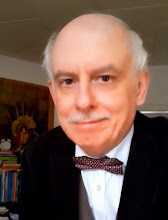The tendency of many orchestras in the Western world to try to make themselves ‘useful’ to society, to become instruments of social change, results from the decreasing status of classical music as a whole, and especially one of its most expensive mediums: the symphony orchestra.
Justification of the costs has now to be found in some form of utility that lies outside music because music as such becomes much too difficult to see as something socially relevant. In a time when the notion of culture, and of psychological and spiritual subjects, is eroding, only the material and the financial aspects of life remain visible, and social injustices because they are understandable by most people, including the culturally-challenged, on the most basic level.
So, in an attempt to survive in an increasing hostile environment, where classical music is seen by large groups as 'white suprematist', 'elitist', 'inaccessible', 'outdated', 'irrelevant to the modern world', a number of people at symphony orchestras think it necessary to turn away from the idea that classical music is a common good in itself and accessible to anyone, and to prostitute the medium. It is like an upperclass woman whose husband has left her and emptied the mutual bank account, and who desperately tries-out selling herself for survival.
But the idea that a symphony orchestra is not, or less, relevant to society if it is not directly connected to the needs of social change, is entirely wrong. Classical music is not an utility instrument, it is an art form which has no other ‘use‘ than being itself. In a world where so much is measured for its utility, it is the arts who offer an island where the value of a psychological and spiritual experience can be found in itself, as itself, and not in relation to some ulterior motive. Classical music addresses itself to the inner experience of man, and not to the outer world with its worldy concerns and needs. It is the opposite nature of classical music to the nature of the world that this unique art form finds its value and relevance, to compensate for the materialist, commercial, trivial and utility-saturated world of modernity, a world which tends to leave people nihilistic, depressed, exhausted and meaningless.

How can we make orchestral concerts more interesting and more attractive for contemporary audiences and especially, for younger generations?
It is not easy, because most of the music performed in concert halls requires sitting still and focussing attention upon what is being heard. But yet, there are ways that invite enthusiastic exploration:
– making the symphony orchestra more relevant to modern times, through relating it to social justice problems, anti-racist initiatives, the needs of immigrants and refugees, and the plight of women of any culture and ethnicity;
– reshuffling the repertoire away from the canon and include more music written by women, blacks, members of suppressed minorities except the talented, Hispanics other than De Falla, and more modern works which audiences can recognize from the cinema and the pop music of their children;
– creating special series with sound art for audiences who wish to better connect with the misery of modernity, combined with medical and psychiatric help on the spot;
– making the concert experience more interesting by adding visuals like big video screens with appropriate movies, or real time views of players and audience members in close-up, or real time views of the foyers, or streets surrounding the concert hall; or combining the performance with ballet dancers, acrobats or mime performers;
– changing concert behaviour ritual into something closer to contemporary life experience: jogging attire instead of evening dress, chatting during the performance, free admission for toddlers and babies, the freedom to walk in or out a performance, and eating, drinking and discussing the music while it is being played;
– extending the concert experience with restaurant facilities, swimming pool, a corner for computer games, a supermarket for biological food, a shop with symphony merchandise, and a sporting hall with the appropriate machinery.
No doubt many more people than ever will want to be introduced to this noble musical tradition, and the art form will be preserved for the future, including its star performers.